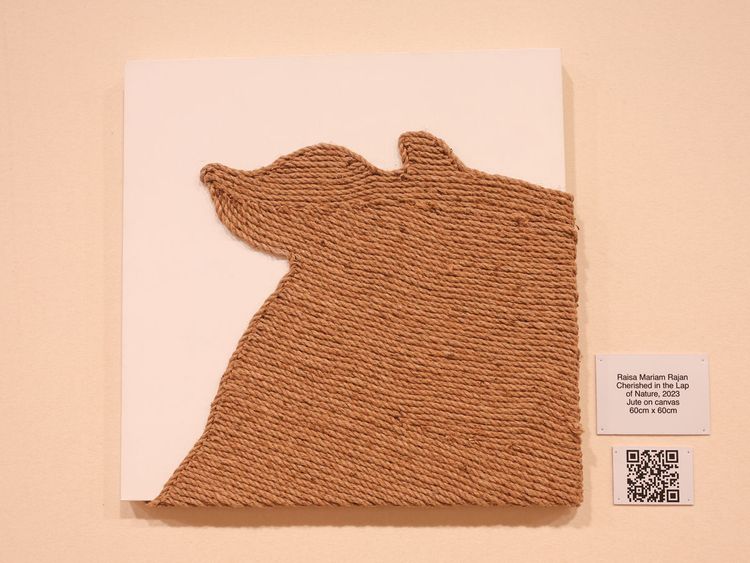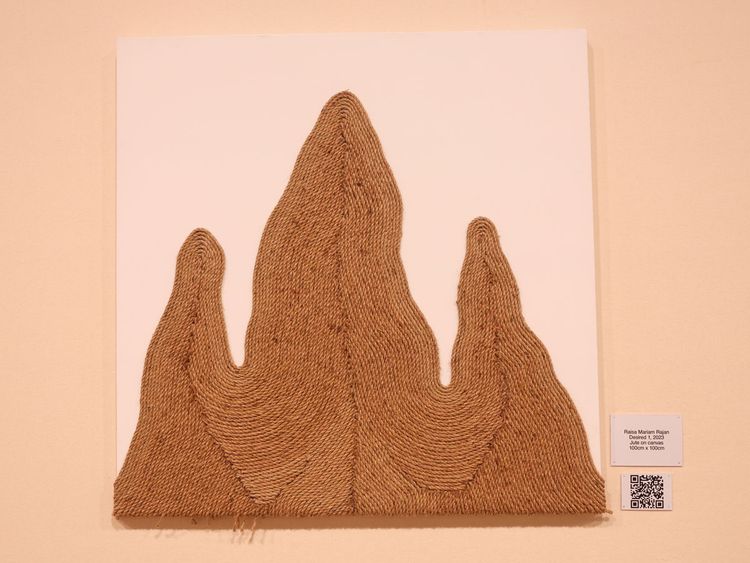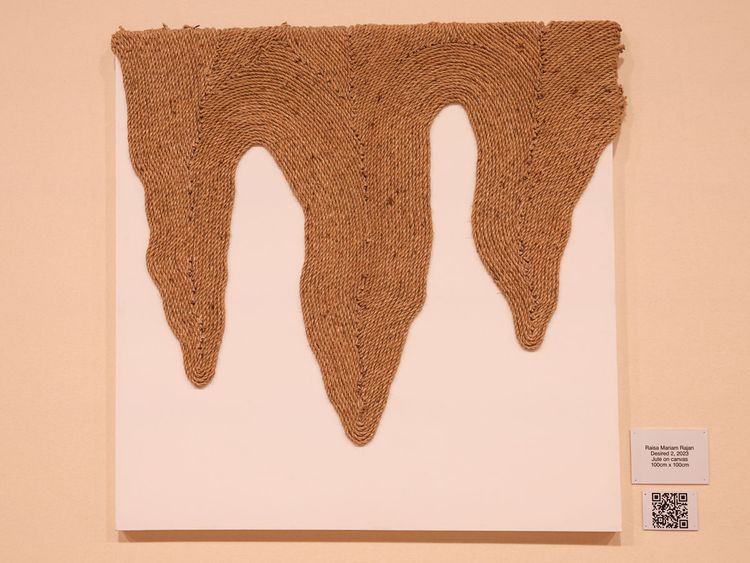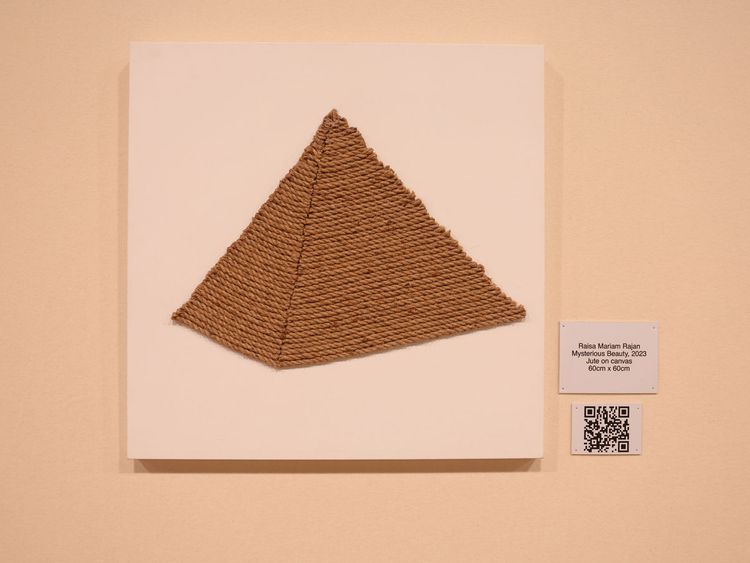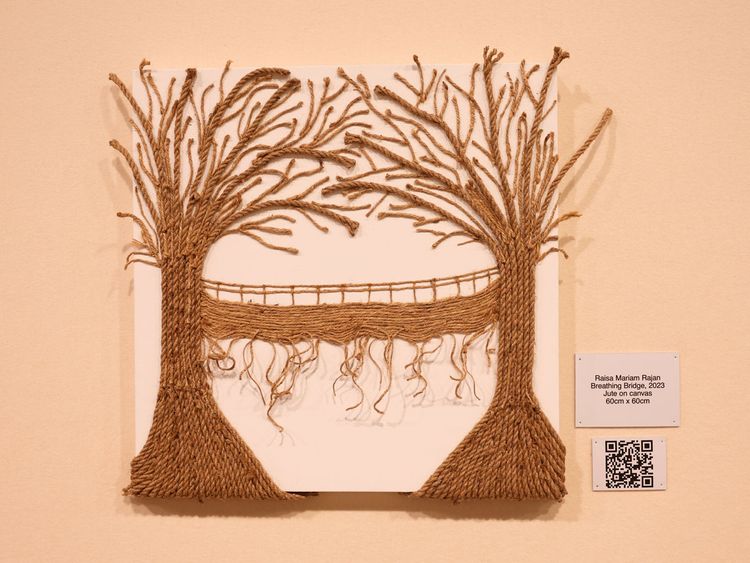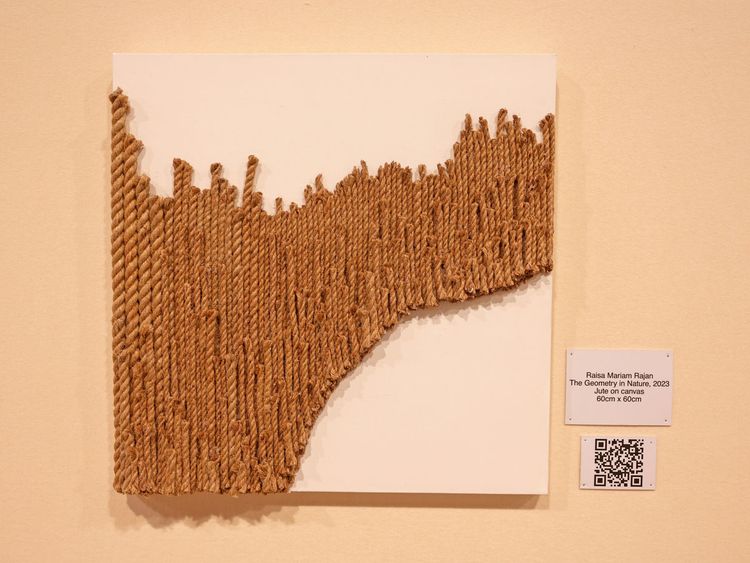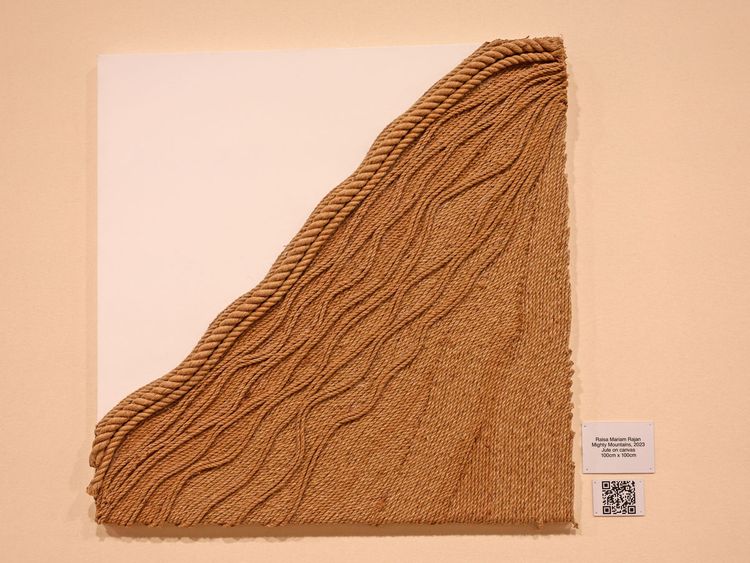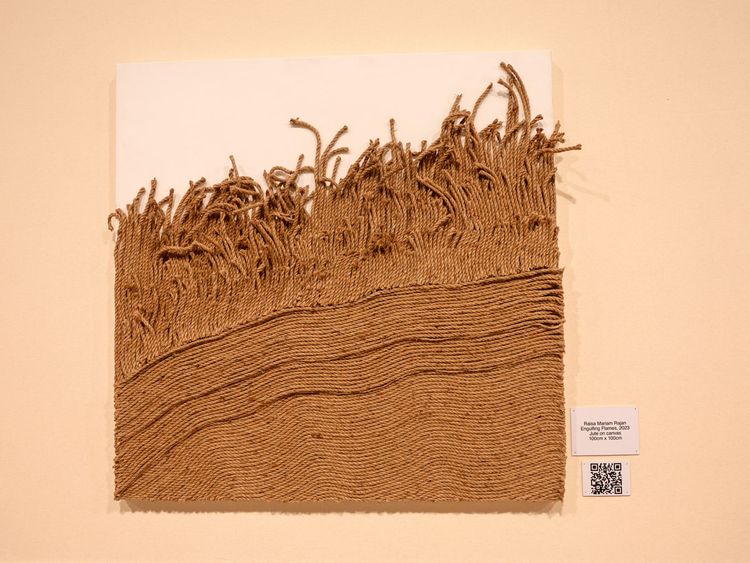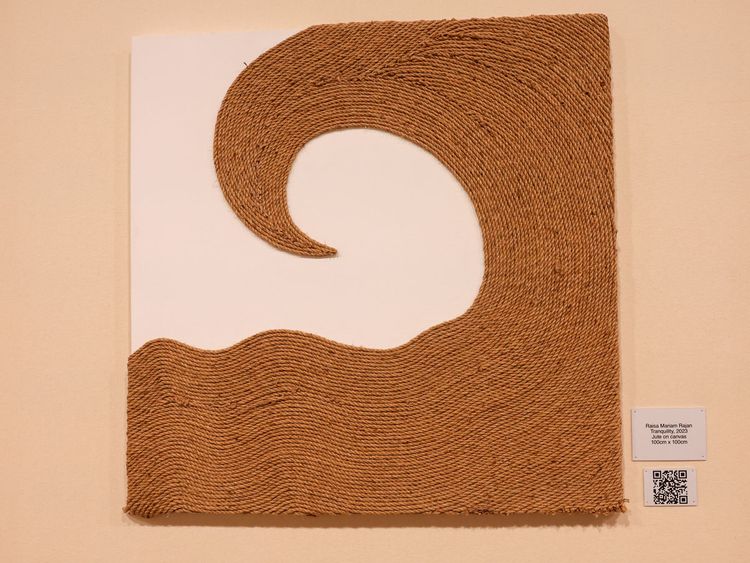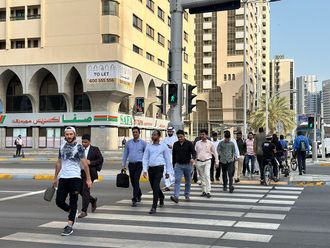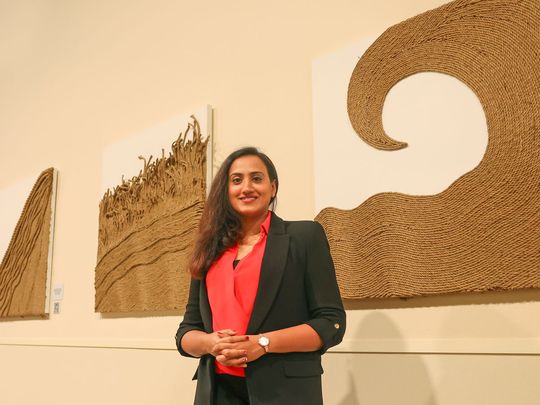
Picture this. Several Emirati women sitting together and weaving date palm coir. While their nimble fingers deftly worked the palm fibres, they shared stories of their lives — the daily struggles and triumphs. Those shared moments gave rise to a bond as strong as a coir rope.
That was a long time ago. Raisa Mariam Rajan saw her grandmother, mother and herself among those Emirati women. Born and raised in the UAE, the Indian artist identified with the sisterhood of Emirati women spinning coir ropes. So coir became the material of choice in her sustainable art.
Twelve of Raisa’s coir artworks are exhibited as Reflections at the COP28 UAE, the UN Climate Summit in the UAE. She has also curated the works of five artists displayed as Existence, all of which adorn the walls in the Blue Zone, where delegates and world leaders pore over the minute details of global attempts at climate action.
“The works reflect art, culture and sustainability in the UAE,” Raisa tells international delegates who visit her exhibition, explaining the significance of coir. “When Emiratis visit my exhibition, they are quick to make the connection. I don’t have to explain it. One lady told me of her grandmother and how coir-spinning sessions helped her network with the womenfolk in the neighbourhood.”
How did Raisa stumble upon coir? Visits to heritage museums in the UAE brought her attention to date coir ropes. So when Raisa had to make a presentation to ALECSO, the Arab League’s Educational, Cultural and Scientific Organisation, Raisa had to involve local natural materials to create art. And she opted for coir.
Giza pyramids and Al Wathba Fossil Dunes
“Have you tried cutting a coir rope?” Raisa asked during the interview with Gulf News. “It isn’t easy. It’s very strong. Strong like the UAE. Strong like the bonds in the UAE. The more fibres you add, the stronger it becomes. Like the people in the UAE.”
Raisa’s proposal for a coir art exhibition that reflects natural wonders and calamities found favour with COP28 organising committee officials. Three pieces were on stalagmites and stalactites: Desired 1, Desired 2 and Destiny. “The idea came from my visit to Serbia,” says Raisa, tracing the shapes in the air with her fingers. “It takes hundreds or thousands of years for them to meet. And we destroy the natural wonders around us without a second thought.”
The Giza pyramids of Egypt too figured prominently in Raisa’s exhibition as the country hosted COP27 at Sharm El Sheikh.” It’s [pyramid] a masterpiece of human creativity. And I wanted to pay tribute to that. That was the toughest to create. Getting the angles, edges and the 3D feel was exasperating and time-consuming. My training as an architect came in handy,” she said.
The Wathba Fossil Dunes of Abu Dhabi have always fascinated Raisa. “If you keep watching them, they will speak to you. You can make all sorts of connections. It’s a natural wonder. I had to create an artwork to reflect that,” she said.
The Giant’s Causeway in Northern Ireland came alive in coir as Raisa worked furiously to recreate the interlocking basalt columns from an ancient volcanic eruption. “The geometrical form was challenging. I used different gauges of ropes to get the right look and feel,” the artist said.
The story of the Living Root Bridges at Chirrapunjee in the Indian state of Meghalaya also tickled Raisa’s imagination. And a rope art materialised. “I’m an Indian; this is my way of showcasing my roots. Although it’s a natural wonder, not many people know about it. I wanted to show it to the world,” Raisa said.
Spotlight on climate disasters
Turning her attention to climate disasters, Raisa first attempted to recreate a tragedy in her home state of Kerala in India. The Brahmapuram garbage dump in Kochi burned for several days, polluting the air, and many people were hospitalised after inhaling the toxic fumes.
Raisa was deeply affected by it. “My parents were there. That was an irresponsible act. The Engulfing Flames was its recreation in coir,” she said.
The work Mighty Mountains reflects Raisa’s concerns about increasing volcanic eruptions and earthquakes. “What lies beneath some mountains is terrifying. The increasing frequency of volcanic eruptions was a worry. And in more than 30 years, I experienced an earthquake for the first time. I believe this impacts climate,” Raisa said.
read more
- COP28 in UAE: Air taxis set for a flight into a green future
- COP28’s success lies in consensus on fossil fuel phase-out: UN Secretary-General says in Dubai
- ‘Clear tactical blockades,’ UN climate chief urges in last-minute call to COP28 Parties in Dubai
- COP28 in Dubai: $3.1b mobilised for food security, 3-year aid package launched for farmers
Marine pollution and the terror of tsunamis are encapsulated as a wave named Tranquility. The waters may look calm and inviting, but if you don’t take care of the oceans, they can wreak havoc,” Raisa said, recalling her college days in Chennai when the 2004 tsunami terror was unleashed on the world. “I had lost a relative to it; several others were affected.”
How long does it take for Raisa to finish an artwork? “I sit for 10 hours at a stretch. Each piece took at least five days. Ropes have a life of their own, so you have to hold them in place until the organic glue dries,” Raisa said.
Her other works include A Request of Mother Nature, a rope art recreating a structure in the Grand Canyon in Arizona, United States. She has held more than 40 exhibitions and 15 live arts worldwide. Raisa’s artwork represented UAE’s Year of Sustainability at the Art Cannes Biennale during the Cannes Film Festival 2023. She holds the Guinness World Record for the most nationalities in an art lesson, set in 2022 in Abu Dhabi.


